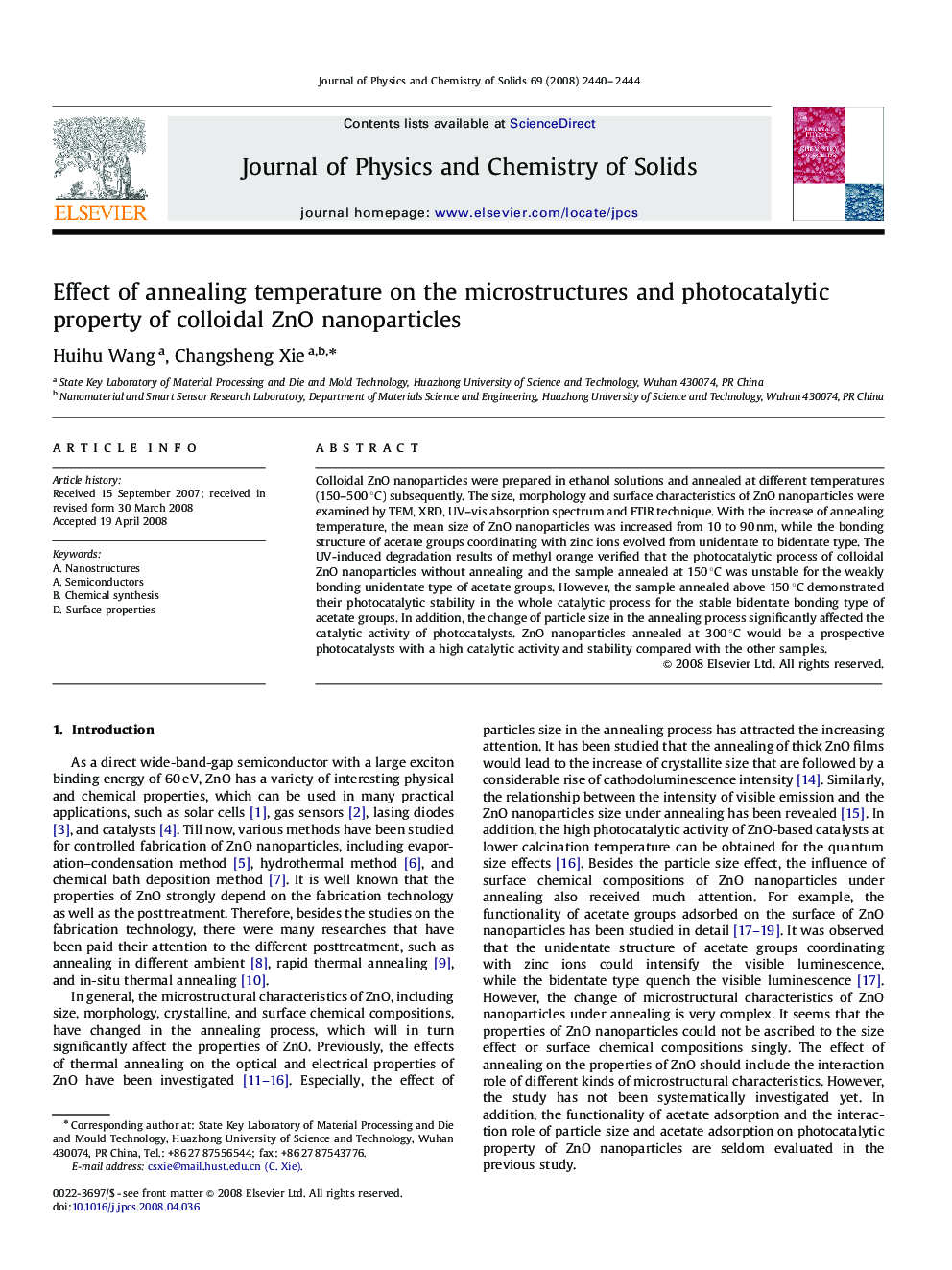| Article ID | Journal | Published Year | Pages | File Type |
|---|---|---|---|---|
| 1517190 | Journal of Physics and Chemistry of Solids | 2008 | 5 Pages |
Colloidal ZnO nanoparticles were prepared in ethanol solutions and annealed at different temperatures (150–500 °C) subsequently. The size, morphology and surface characteristics of ZnO nanoparticles were examined by TEM, XRD, UV–vis absorption spectrum and FTIR technique. With the increase of annealing temperature, the mean size of ZnO nanoparticles was increased from 10 to 90 nm, while the bonding structure of acetate groups coordinating with zinc ions evolved from unidentate to bidentate type. The UV-induced degradation results of methyl orange verified that the photocatalytic process of colloidal ZnO nanoparticles without annealing and the sample annealed at 150 °C was unstable for the weakly bonding unidentate type of acetate groups. However, the sample annealed above 150 °C demonstrated their photocatalytic stability in the whole catalytic process for the stable bidentate bonding type of acetate groups. In addition, the change of particle size in the annealing process significantly affected the catalytic activity of photocatalysts. ZnO nanoparticles annealed at 300 °C would be a prospective photocatalysts with a high catalytic activity and stability compared with the other samples.
